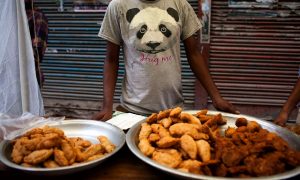14 October 2016, Rome – All cities, big and small, can and must help build the sustainable, resilient food systems of the future, FAO Director-General José Graziano da Silva stressed during the second meeting of the Milan Urban Food Policy Pact, a collaboration between mayors of 130 cities from around the world.

Signed at the world Expo in Milan last year, the pact unites mayors from Banjul to Barcelona and from Kyoto to Quito in the search for local solutions to end extreme poverty and malnutrition, reduce waste and adapt to a changing climate.
Cities occupy just 3 percent of the world’s land area, but are home to some 3.5 billion people, Graziano da Silva pointed out — more than half of humanity. And these numbers are rising.
Rapid urbanization puts pressure on food systems and natural resources, calling for solutions that make cities more inclusive, safe and resilient, according to FAO’s Director-General.
“Local authorities have an important role to play in our global quest for sustainable development,” Graziano da Silva said that the Mayors’ Summit held in Rome on the occasion of World Food Day (WFD), adding that “It is at the local level where people live, where people eat, use water and take out their garbage.”
But for too long “food security and nutrition have been overlooked in urban planning and development,” he said.
Referencing this year’s WFD theme, he also underlined the direct impacts of climate change on food security and its role as driver of migration from rural to urban areas.
Rising to the challenge
Already, many cities are responding to the challenges of climate change and rapid urbanization. From initiatives to reduce food waste to projects that transform urban food deserts into hubs for fresh local produce, cities have emerged as laboratories of innovation for solving today’s food challenges.
And more and more, urban centres are becoming food producers, Graziano da Silva noted, increasing availability of healthy, affordable food while cutting down on transportation. This can make an important contribution to household food security, he stressed, especially in times of crisis or food shortages.
Cities are also finding creative ways to cut food losses and fight hunger at the same time, transforming left over and unwanted produce into nutritious meals for struggling citizens.
“Cities can and must turn policies often decided on a national and international level into practical applications,” said the mayor of Milan, Giuseppe Sala.
Milan is eager to maintain and reinforce its guiding role on food policy, he said, noting that his city has launched multiple projects, including one aimed at linking local rice and cheese producers to a school meals program and another that encourages students to bring home uneaten food from school cafeterias.
FAO is supporting the Milan Urban Food Policy Pact by helping cities set indicators and targets for progress and helping monitor results. It’s also active in expanding the network and creating opportunities for cities to exchange experiences.
Looking ahead at the upcoming UN climate conference in Morocco, Graziano da Silva stressed that the time has come to transform international commitments into concrete actions. “Cities must be involved in this effort,” he said, adding that “All cities big and small have the potential to make a difference.”
The next Summit of the Milan Pact will take place in 2017 in Valencia, Spain.

